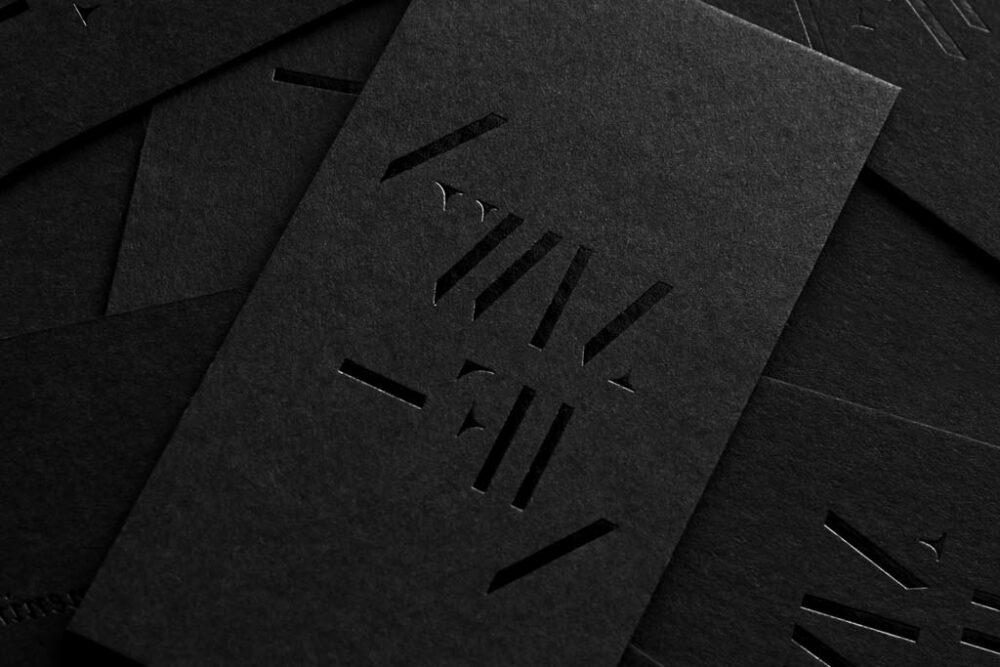Frequently Asked Questions
How should a professional business card look like?
A professional business card should have a clean and modern design, with clear contact information, a well-chosen color scheme, and a visually appealing layout that reflects the brand's identity.
What color business card stands out the most?
A vibrant and bold color, such as bright orange or electric blue, can make a business card stand out and leave a lasting impression.
What is an example of uncoated paper?
An example of uncoated paper is a standard copy paper commonly used for printing documents.
What does uncoated finish look like?
An uncoated finish has a matte, textured appearance with a slightly rough surface.
What does uncoated finish in business card look like?
An uncoated finish in a business card refers to a matte, non-glossy surface that provides a natural and tactile feel.
Should business cards be plain?
Business cards should not be plain as they serve as a powerful marketing tool and should reflect the brand's identity through unique and visually appealing designs.
What are clear business cards made of?
Clear business cards are typically made of transparent plastic materials such as PVC or acrylic.
What is the difference between coated and uncoated business cards?
Coated business cards have a glossy finish that enhances colors and provides a smooth texture, while uncoated business cards have a matte finish that gives a more natural and textured look.
What is the difference between coated and uncoated paper?
Coated paper has a smooth, glossy finish that enhances color vibrancy and sharpness, while uncoated paper has a more natural, textured surface that is ideal for a softer look and feel.
What does coated vs uncoated mean?
Coated refers to a paper with a smooth, glossy finish, while uncoated refers to a paper with a rough, matte finish.
What is the difference between glossy vs matte vs uncoated business cards?
Glossy business cards have a shiny finish that enhances colors and provides a polished look, while matte business cards have a non-reflective surface that exudes sophistication, and uncoated business cards offer a natural, textured feel.
Is glossy paper coated or uncoated?
Glossy paper is coated to achieve a smooth and shiny finish.
What is high quality business card material?
High quality business card material refers to premium options such as thick cardstock, textured finishes, and specialty papers that enhance the look and feel of the cards.
Should business cards be laminated?
Laminating business cards can enhance their durability, protect against wear and tear, and give them a professional and polished look.
What is the difference between matte and uncoated finish?
Matte finish has a smooth, non-reflective surface, while uncoated finish lacks any additional coating or sheen.
What is the difference between matte finish and uncoated finish?
Matte finish refers to a smooth, non-glossy surface with low reflectivity, while uncoated finish refers to a paper or material without any coating or finishing treatment.
What is the difference between matte and uncoated paper?
Matte paper has a smooth, non-glossy finish, while uncoated paper lacks any coating or finish, resulting in a more natural and textured surface.
Is matte paper coated or uncoated?
Matte paper is coated with a non-glossy finish, providing a smooth and muted appearance.
Is bond paper the same as uncoated?
No, bond paper and uncoated paper are not the same; while both are commonly used for printing, bond paper has a smoother finish and is typically heavier than uncoated paper.
Is coated paper the same as cardstock?
No, coated paper and cardstock are not the same; while both have a smooth finish, cardstock is thicker and more durable than coated paper.
Is uncoated the same as matte?
No, uncoated and matte are not the same; uncoated refers to paper without any coating, while matte refers to a specific type of coating that gives a non-glossy finish.
How can you tell if paper is coated or uncoated?
One way to determine if paper is coated or uncoated is by observing its surface texture and shine, with coated paper having a smooth and glossy finish, while uncoated paper has a more textured and matte appearance.
What is the best card for making business cards?
The best card for making business cards is a high-quality, thick cardstock with a smooth finish, such as 16pt or 18pt premium matte or gloss coated paper.
What is the best finish for business cards?
The best finish for business cards is a combination of matte and spot UV coating, which provides a sleek and sophisticated look while also enhancing durability.
Is coated or uncoated better?
The choice between coated and uncoated paper depends on the specific requirements of the project, with coated paper offering a smoother finish and enhanced color vibrancy, while uncoated paper provides a more natural and textured look.
Is matte or glossy better?
The choice between matte and glossy finishes depends on the desired aesthetic and purpose of the visual material.
Is matte finish or glossy better?
The choice between matte finish and glossy depends on the desired aesthetic and purpose of the visual material.
What is the most common kind of card finish?
The most common kind of card finish is a glossy finish, which provides a shiny and reflective surface.
How do I know if my paper is coated or uncoated?
To determine if your paper is coated or uncoated, you can perform a simple visual test by examining the surface for a glossy or matte finish.
How do you make business cards stand out?
To make business cards stand out, incorporate unique design elements, such as bold colors, creative typography, and eye-catching graphics.
What are uncoated business cards?
Uncoated business cards are printed on a porous, matte paper stock that lacks any additional coating or finish, resulting in a natural and tactile texture.
What does uncoated paper feel like?
Uncoated paper has a rough texture that feels natural and tactile to the touch.
Why is uncoated paper more expensive?
Uncoated paper is more expensive due to its higher production costs and the additional steps required to achieve a smooth, glossy finish.
What are the advantages of uncoated paper?
Uncoated paper offers a natural and tactile feel, excellent ink absorption, and a more cost-effective option for printing projects.
Why is uncoated paper better to write on?
Uncoated paper provides a better writing experience due to its porous surface, which allows ink to be absorbed quickly and prevents smudging.
Is glossy or matte better for business cards?
When it comes to business cards, the choice between glossy or matte finishes depends on the desired aesthetic and the overall branding strategy of the company.
Can you print metallic ink on uncoated paper?
Yes, metallic ink can be printed on uncoated paper to create a unique and eye-catching visual effect.
Can you write on uncoated cardstock?
Yes, uncoated cardstock is a suitable material for printing various designs and graphics.
Can you write on uncoated paper?
Yes, uncoated paper is suitable for writing and printing purposes.









JPRLY
09-18-23
United States
Verified Buyer
Cards came out as expected. Very easy to order.
LaProjects
02-20-23
United States
Verified Buyer
I’ve ordered these a number of times and have always been happy with the results!
Dsds
10-02-23
United States
Verified Buyer
Very satisfied with Printing Brooklyn. The cards came out great.